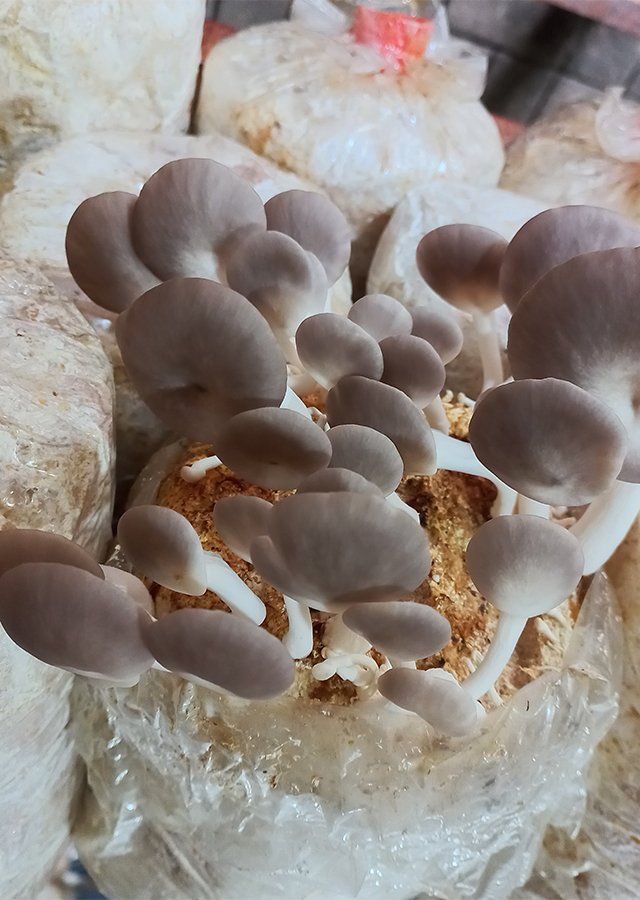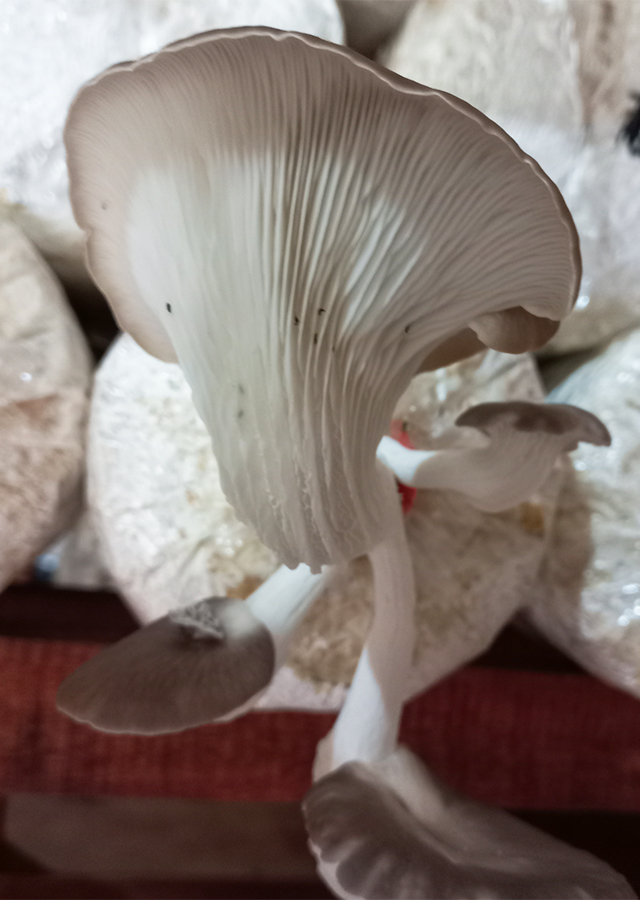Traditional Herbs from Pleurotus cystidiosus
lower_high_blood_pressure
- Prepare enough brown oyster mushrooms, wash them thoroughly.
- Boil the mushrooms until they boil and are cooked, add sugar and salt to add taste.
- Eating brown oyster mushrooms can lower high blood pressure.
What is Pleurotus cystidiosus Looks like??



Parts of Pleurotus cystidiosus that could be used
- All Parts of the Plant
Pleurotus cystidiosus Distribution
The brown oyster mushroom has the binomial name Pleurotus cystidiosus. It is a edible mushroom from the wood fungus type. This brown oyster mushroom has a chewier texture and a more distinctive taste and aroma, when compared to white oyster mushrooms. However, the level of productivity of the harvest is not as good as white oyster mushrooms. Thus, the selling price is slightly higher compared to the selling price of white oyster mushrooms. This type of mushroom also has a high protein and amino acid content which is useful in controlling blood pressure. Apart from that, this mushroom is a low-fat source of fiber and is used as a weight loss diet foodAgroecology of Pleurotus cystidiosus
Brown oyster mushrooms require certain temperatures to grow optimally. In the optimal temperature range, the oyster mushroom mycelium phase is between 26-28 °C and the fruit growth phase is 24-26 °C. The growth of ovaries requires a normal room temperature of around 25-28 °C. If it is too cold the fruit body will contain a lot of water which will result in rot, whereas if it is too hot the growth of the fruit will be hampered. The mycelium growth period requires air humidity of between 65-70%, but to stimulate the growth of shoots and fruiting bodies, mushrooms require air humidity of around 80-85%. Light is really needed to stimulate the growth of primordia (ovary fruit), even if a lack of light will reduce the size of the fruit and will cause the color of the cap to turn pale, even the mycelium grows well in dark conditions.
Morphology of Pleurotus cystidiosus
- The stem and bottom of the hood\u00a0are white, grows sideways, smells like straw mushrooms.
- The fruiting body is shaped like an oyster-shaped hood, 4-15 cm or more in diameter. The surface of the hood is smooth, slightly oily when moist, the color of the hood is white-brown or dark brown sometimes yellowish when mature, but the cap rolls inward and is often wavy in young mushrooms. Brown oyster mushrooms have rather thick, wide lamellae, relatively dense, ending at the top of the stipe, usually with anastomoses close to the stipe where they form a web.
- Basidiospores have a length of 11.0-18.0 x 3.2-5.7\u00b5m (means: 14.8\u00b11.7 x 4.3\u00b10.7\ u00b5m), cylindrical to elliptical, thin-walled with small apiculus, inamyloid, hyaline.
Cultivation of Pleurotus cystidiosus
Brown oyster mushrooms are propagated using spores.
Pleurotus cystidiosus, more details :
Chemical Content of Pleurotus cystidiosusProteins and amino acids. The amino acids contained in brown oyster mushrooms are isoleucine, lysine, methionine, cysteine, tyrosine, threonine, tryptophan, valine, argin, histidine, alanine, aspartic acid, glycine and serine.
Benefits of Pleurotus cystidiosus
Helps cure liver disease, lose weight, helps prevent breast cancer, lowers high blood pressure, helps maintain heart health and many other health benefits.
Simplisia of Pleurotus cystidiosus
Another Facts for Pleurotus cystidiosus :
Synonym of Pleurotus cystidiosusPleurotus abalonus Y.H. Han, K.M. Chen & S. Cheng, Pleurotus cystidiosus subsp. abalonus (Y.H. Han, K.M. Chen & S. Cheng) O. Hilber, Pleurotus cystidiosus subsp. cystidiosus O.K. Mill.
Habitus of Pleurotus cystidiosus
Succulents. Annual fungus, stalk height up to 6 cm
Habitat of Pleurotus cystidiosus
- Forest
- Land
No comments:
Post a Comment